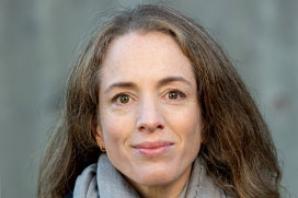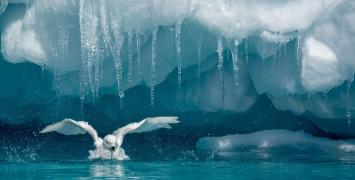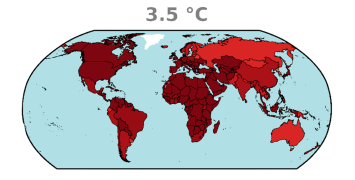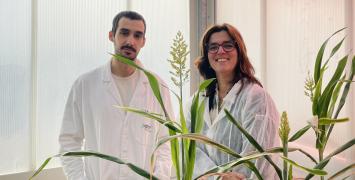Maths in the Earth’s crust
This year the ERC reached a special round-number milestone: its 10,000th grantee. The successful applicant to reach this significant threshold was Inga Berre, an applied mathematician and leading Norwegian researcher in geothermal energy. We interviewed Berre to find out how mathematics is helping us understand more about this ancient energy source first used by the Romans in their spas, and what role geothermal energy can play in the transition to a carbon-neutral future.

Opting to pursue a degree in maths has taken Inga Berre’s career deep below the Earth’s crust. Initially required for her primary interest in physics at school, Berre soon discovered at university that the beauty of maths lies in the eyes of the beholder – and can help one see underground.
Being offered a permanent position at the University of Bergen felt like both a great and intimidating opportunity to Berre at the time. ‘I felt immensely responsible to focus on an area of research of benefit to society’, she says. ‘Growing up in an oil and gas rich country made me curious about alternative energy sources. So with a bit of prior subsurface research, I took the decision to apply my maths skills to gaining a better understanding of geothermal resources.’
More specifically, Berre is interested in unconventional geothermal systems. Unlike the conventional systems that exist only in areas of volcanic activity, the unconventional resources involve drilling down thousands of meters below the surface, injecting water into rock to open natural fractures or sustain reservoir fluid pressure, and extracting heated water from production wells.
Berre studies the interaction between thermal, hydrological, mechanical and chemical processes in the subsurface that occur when such drilling and extraction takes place. It’s there, deep in the earth, where mathematical models can help describe these interconnected processes and give a clearer insight into which ones are important and how they interact.
Pursuing curiosity-driven research
The decision to apply for an ERC grant came from the fact that Berre had come up against a non-porous wall aboveground – some tough mathematical problems. The systems of equations describing the geothermal dynamics hide complex interactions that need the help of computers and simulation technology to be solved.
‘With ERC funding, I hope to develop unprecedented mathematical and numerical approaches and produce new open-source simulation software’, Berre says. ‘With this, my ERC project will be able to provide a better picture of geothermal systems and their ability to produce power and heat.
Geothermal energy in a low carbon future
Knowing that this project is contributing to wider research addressing future energy needs is a motivating factor for Berre. While her research is more theoretical than applied, she compares it to ‘thin threads in an extensive web of collective research’, adding that ‘it is targeting central questions, which are required to expand the use of geothermal resources in the future’.
Geothermal energy has appealing properties; the big attraction is that energy from the Earth’s crust can produce heat and power 24/7, and it is naturally stored. It is also a ubiquitous natural resource and can thus significantly contribute to a portfolio of renewables needed for Europe to become climate neutral by 2050, as laid out in the 2020 European Green Deal. However, the ease with which geothermal can be accessed varies by region and there are parts of the world with large resources which are not being exploited.
The unconventional geothermal resources, which Berre and her team are studying, have great potential but not yet the technology to be sustainable and economically viable. Much of what the team studies is not only relevant for those geothermal systems but can also be useful for understanding other induced and natural subsurface processes. ‘The strength of frontier research is its potential to contribute to valuable applications in unexpected ways’, says Berre.
The bedrock of a successful team
In order to bring new perspectives and skills to her project, Berre recruited collaborators from different countries and disciplines, and she is now recruiting team members internationally. ‘In an interdisciplinary project like mine, this is an essential asset’, adds Berre.
Her research relies on engineering geologists to understand structural rock deformations as well as on geophysicists, physicists, computer science experts and mathematicians to better understand how they can build mathematical models and simulation technology.
‘Developing and training early-stage researchers is the most rewarding part of my job’, says Berre. ‘It is important to me that my PhD students become part of an international community of academics and have the opportunity to further their career at international universities.’
Building a research agenda
While mobility has many great aspects for young researchers, Berre does point out, however, that there is a lot of pressure on young researchers to relocate in order to establish a research career. She has observed talented early-stage researchers opt out of academia due to it being hard to relocate and balance family life.
Rather than placing importance on moving around, she advises young researchers to focus on building their own ‘research agendas’ – developing what they want to achieve with their research and acquiring the skills to do so. ‘Relocating isn’t the only way to build an international network and family life does not necessarily have to be a barrier for young researchers’, she adds.
For instance, when she was a student, Berre attended lots of conferences, spent some time doing research in both France and USA, and became part of international networks and organisations in which she is still active today. Ultimately, she managed to build a successful career in Norway, her home country, and build a family life with three children. In doing so, she took advantage of family-related opportunities available to researchers, such as ERC’s extension of the eligibility window for scientists who had career breaks due to maternity or paternity leave.
On being the milestone
While Berre feels immensely honoured that her research and team is in the spotlight to mark this special occasion, she points out that research is a global collaborative effort. ‘I am honored to be part of such a remarkable and inspiring community of ERC-funded researchers and feel privileged that my research is contributing to science at the frontiers of knowledge’, she concludes.
BIO
Inga Berre is professor at the Department of Mathematics, University of Bergen where she also obtained her PhD in 2005. She is director of the VISTA Center for Modeling of Coupled Subsurface Dynamics. Since 2018, she has chaired the Joint Program Geothermal, European Energy Research Alliance and she has been co-chair of the SET-Plan Deep Geothermal Implementation Working Group 2019-2021. She is also chair of the SIAM Geosciences Activity Group for the term 2021-2022.






